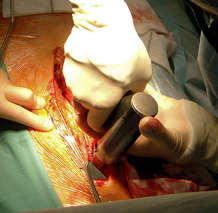
Healthy habits prevent breast cancer: study
Breast cancer is a cancer that starts in the breast, usually in the inner lining of the milk ducts or lobules. There are different types of breast cancer, with different stages (spread), aggressiveness, and genetic makeup. With best treatment, 10-year disease-free survival varies from 98% to 10%. Treatment includes surgery, drugs (hormone therapy and chemotherapy), and radiation.
Nearly 40 percent of all breast cancer cases in the United States could be prevented if women kept a healthy weight, drank less alcohol, exercised more and breastfed their babies, according to a report published on Tuesday.
The report, which reviewed 81 new studies on the links between lifestyle and cancer, showed that 70,000 breast cancer cases could be prevented in the United States alone every year.
“We are now more certain than ever that by maintaining a healthy weight, being physically active and limiting the amount of alcohol they drink, women can dramatically reduce their risk,” Dr. Martin Wiseman of the American Institute for Cancer Research/World Cancer Research Fund, who led the study, said in a statement.
“We estimate that almost 40 per cent of breast cancer cases in the United States, or about 70,000 cases every year, could be prevented by making these straightforward everyday changes,” added the AICR’s Susan Higginbotham.
Breast cancer kills 400,000 women and a few men globally every year, and 40,000 in the United States alone.
Many studies have shown a low-fat diet, regular exercise, keeping a lean weight and breastfeeding babies can prevent breast cancer. However, a significant percentage of cases are caused by faulty genes and not linked to lifestyle.
Signs and symptoms
The first symptom, or subjective sign, of breast cancer is typically a lump that feels different from the surrounding breast tissue. According to the The Merck Manual, more than 80% of breast cancer cases are discovered when the woman feels a lump. According to the American Cancer Society, the first medical sign, or objective indication of breast cancer as detected by a physician, is discovered by mammogram. Lumps found in lymph nodes located in the armpits can also indicate breast cancer.
Indications of breast cancer other than a lump may include changes in breast size or shape, skin dimpling, nipple inversion, or spontaneous single-nipple discharge. Pain (“mastodynia”) is an unreliable tool in determining the presence or absence of breast cancer, but may be indicative of other breast health issues.
When breast cancer cells invade the dermal lymphatics—small lymph vessels in the skin of the breast—its presentation can resemble skin inflammation and thus is known as inflammatory breast cancer (IBC). Symptoms of inflammatory breast cancer include pain, swelling, warmth and redness throughout the breast, as well as an orange-peel texture to the skin referred to as peau d’orange.
Another reported symptom complex of breast cancer is Paget’s disease of the breast. This syndrome presents as eczematoid skin changes such as redness and mild flaking of the nipple skin. As Paget’s advances, symptoms may include tingling, itching, increased sensitivity, burning, and pain. There may also be discharg
Occasionally, breast cancer presents as metastatic disease, that is, cancer that has spread beyond the original organ. Metastatic breast cancer will cause symptoms that depend on the location of metastasis. Common sites of metastasis include bone, liver, lung and brain.Unexplained weight loss can occasionally herald an occult breast cancer, as can symptoms of fevers or chills. Bone or joint pains can sometimes be manifestations of metastatic breast cancer, as can jaundice or neurological symptoms. These symptoms are “non-specific”, meaning they can also be manifestations of many other illnesses.
Most symptoms of breast disorder do not turn out to represent underlying breast cancer. Benign breast diseases such as mastitis and fibroadenoma of the breast are more common causes of breast disorder symptoms. The appearance of a new symptom should be taken seriously by both patients and their doctors, because of the possibility of an underlying breast cancer at almost any age.
breast cancer , breast cancer Health, breast cancer Health Latest, breast cancer Health Information, breast cancer Health information, breast cancer Health Photo,Exercising for Weight Health photo, breast cancer Health Latest, breast cancer Health latest, Exercising for Weight Health Story, Healthy Minnesota Health story, breast cancer Video, breast cancer video, breast cancer Health History, breast cancer Health history, breast cancer over Picture, history, breast cancer Asia, Healthy Minnesota asia, breast cancer Gallery, Exercising for Weight gallery, breast cancer Photo Gallery, Healthy Minnesota photo gallery, breast cancer Picture, breast cancer picture, breast cancer Web, Malaysia Health, web Health, picture, video photo, video surgery, gallery, laparoscopy, virus, flu, drug, video, Health Health, calories, photo, nutrition, health video, symptoms, cancer, medical, beating, diet, organic, blister, exercise, weightloss, surgery, spiritual, eating, tips, skin, operation, bf1, Healthy,habits, prevent, breast, cancer




